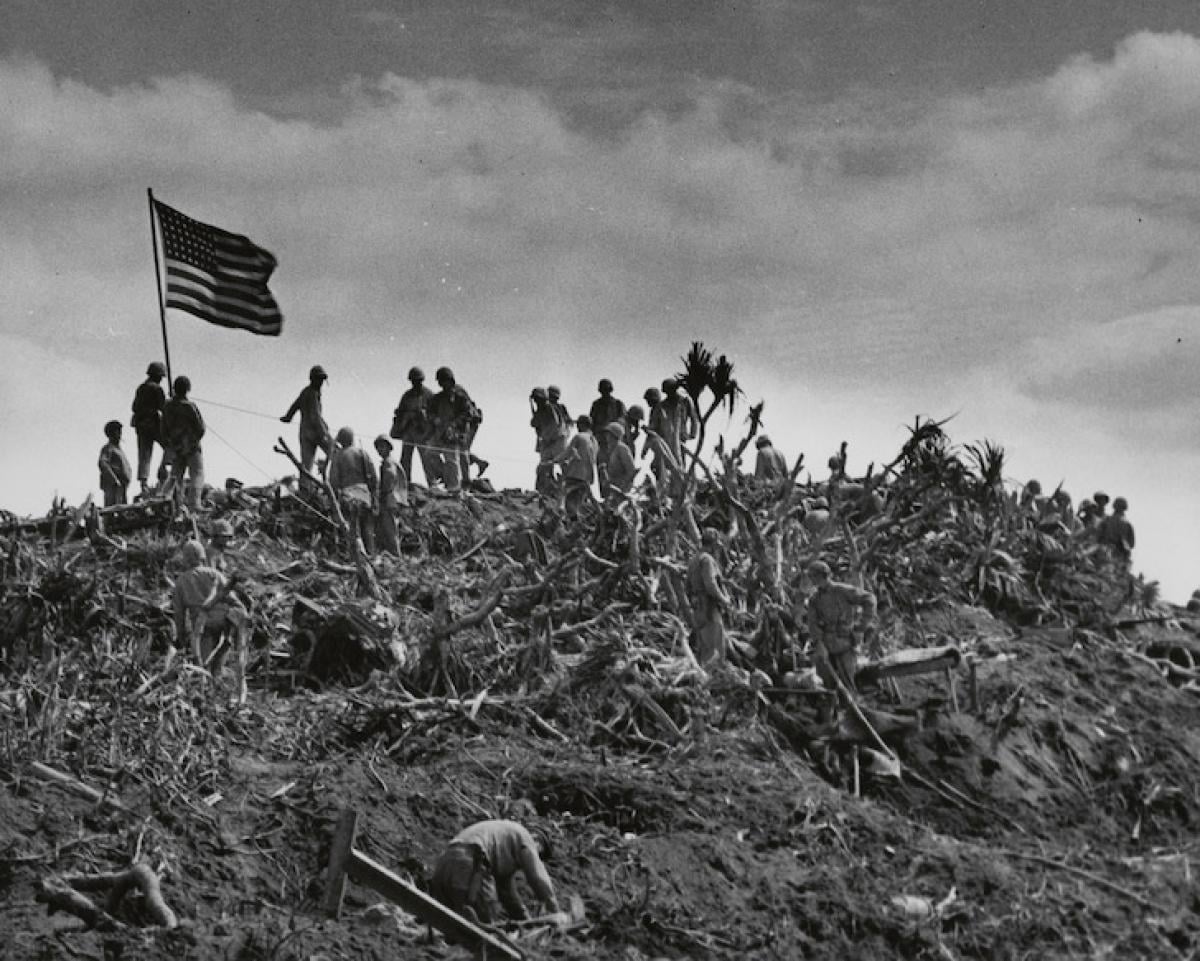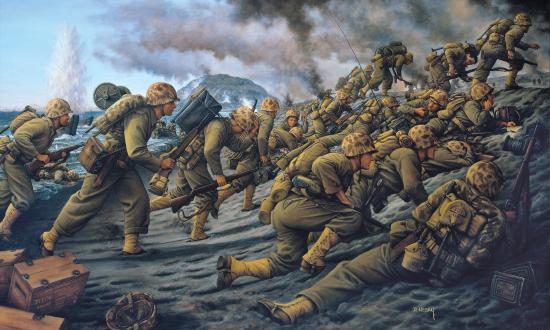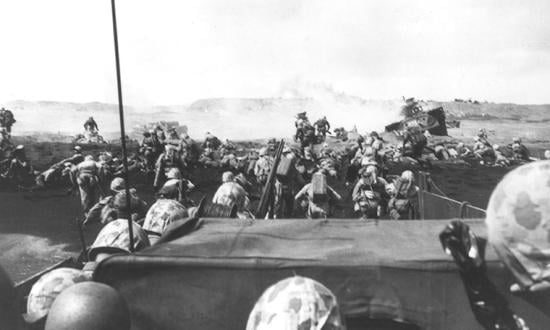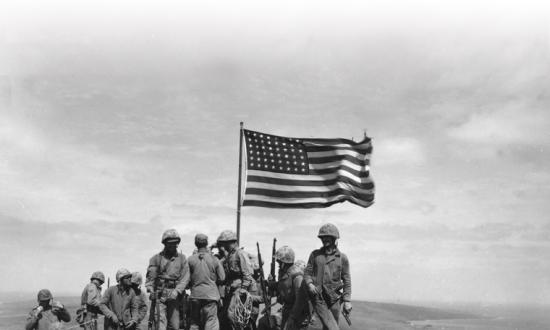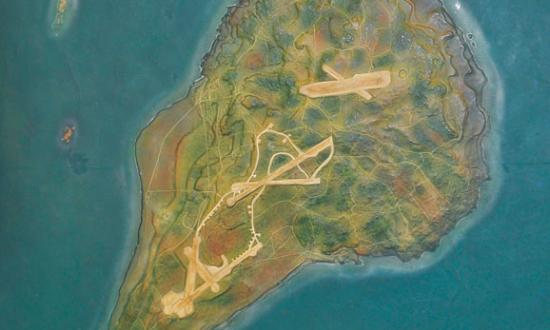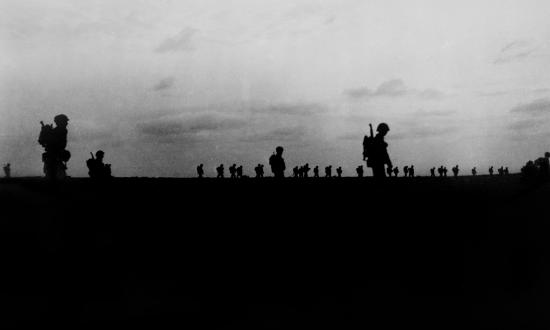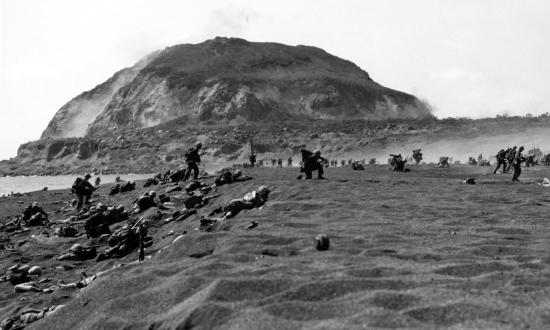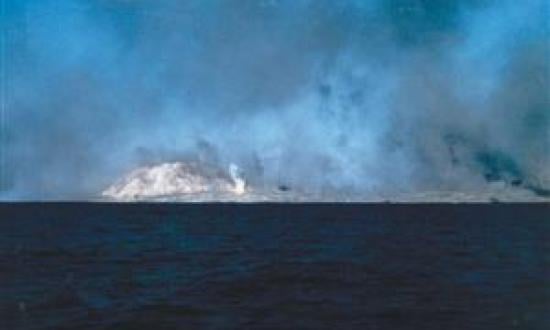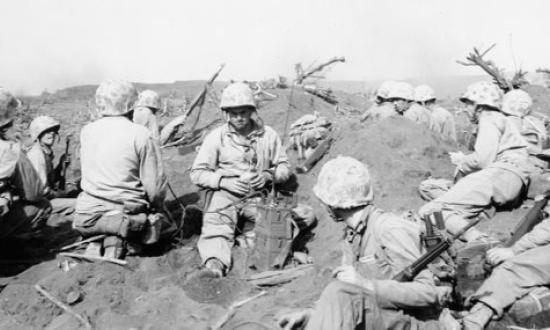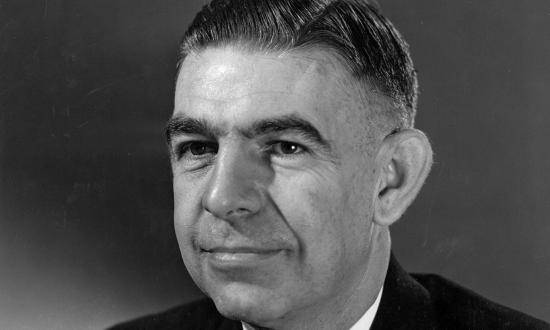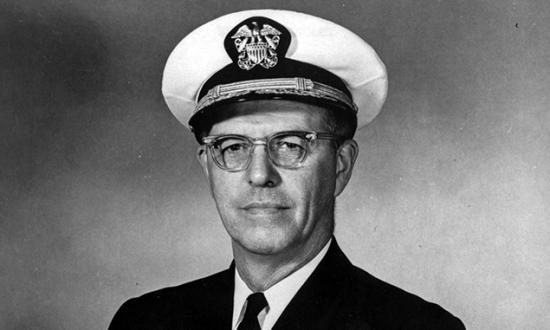Seventy-five years ago, U.S. Marines came ashore on a desolate eight-square-mile volcanic island dominated by Mount Suribachi and located roughly halfway between the Marianas and Tokyo. Iwo Jima’s value lay in its airfields. B-29s Superfortresses that were damaged or low on fuel could land there, and Army Air Forces fighters based on the island could escort the bombers to their targets in Japan. Three Marine divisions—more than 70,000 men—had the task of seizing the island. But an operation that U.S. commanders forecast would take a week to complete would stretch out to five weeks, and the Marines’ determination and sacrifice on Iwo Jima would become enduring touchstones for the Corps.
The 75th anniversary coverage of the Battle of Iwo Jima is brought to you by the Members of the U.S. Naval Institute.
Through Naval History, Proceedings, Naval Institute Press books, our photo archives, and oral histories, the U.S. Naval Institute has been dedicated to preserving and sharing naval history since 1873.
Become a Member Today



